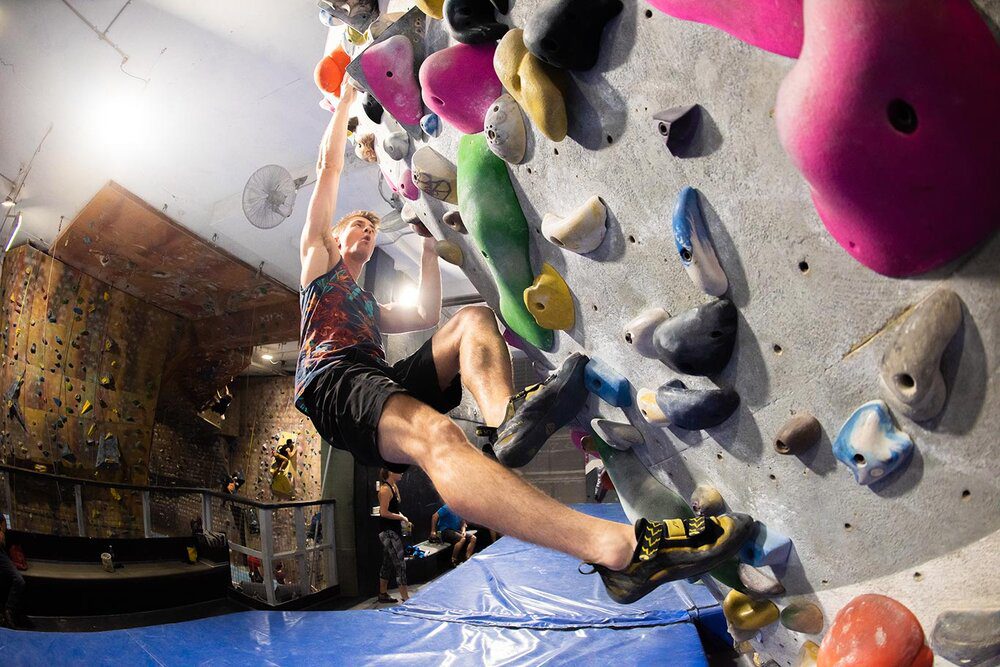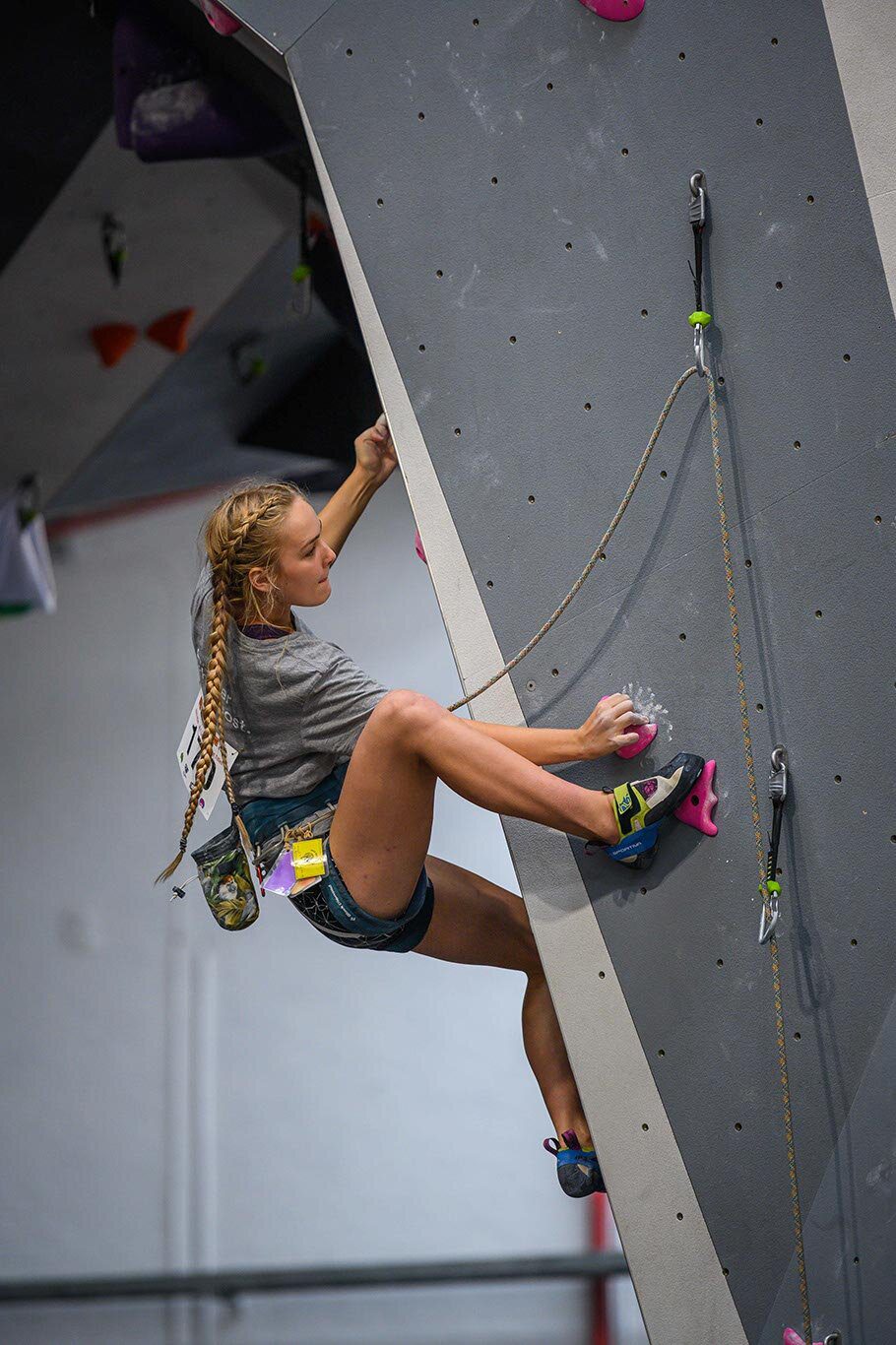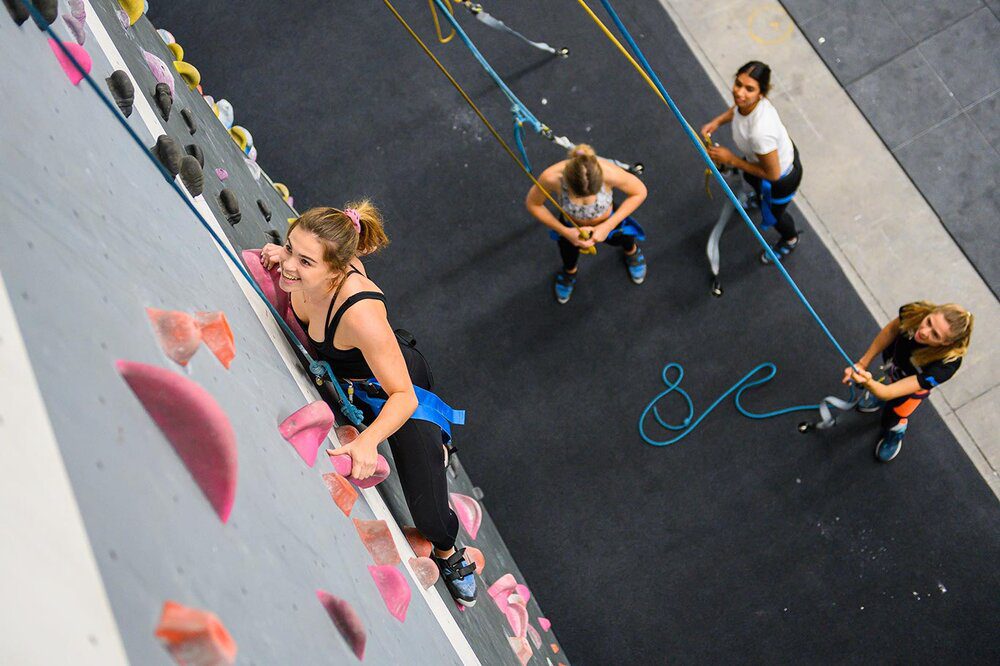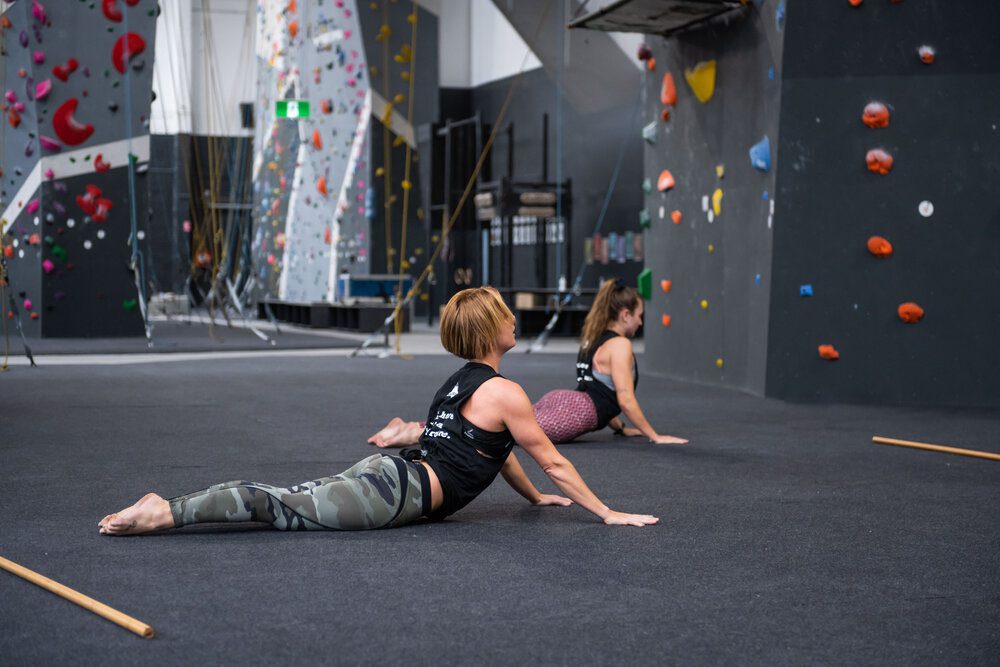
Most people probably had their first climbing experience by pulling themselves up a tree branch when they were very young. However, climbing rock walls needs a little more planning and technique; otherwise, you may be left with that next hold just out of reach!
So, get ready to learn with our latest tips and climbing techniques designed to maximise and lengthen your reach in no time!
In this article, we’ll cover everything from fancy footwork all the way to stretching and exercises to help you in the game of inches. Here are the first 6 essentials:
The feet serve as the foundation for climbing. Just as you would climb a ladder by stepping up one foot at a time, the same thing applies when climbing. Let the feet do the stepping, and let your hands be your balancing instruments. If you feel that your hands can’t reach the next hold, move your feet up to a higher position. You can’t reach higher if your leg is already as straight as it will go!

Your legs carry you around with tens of thousands of steps every day, and they are much more powerful than your arms. So, push up with your legs, instead of trying to pull yourself up with your hands. Your legs have a bigger gas tank than your arms, so save your arms!
Many beginners move hastily, scuffing their feet across the walls. This makes their shoes wear out faster, and waste energy. Placing your feet precisely on the holds will help you to move smoothly and help build your confidence with each step.
Even if the foothold is a big one, pick a small spot to stand on that works best - and make sure you watch your foot go on the hold properly. If you’re looking up at the next handhold before your foot is appropriately on the hold, you can’t be entirely sure you’re standing on it correctly.
It would be like trying to high five your climbing buddy while staring at your feet! The more confident you are that your foot is secure, the more confidently you can move off of it.
Climb Fit Gurus Jasmine and Steve run through this in detail, in our 2 part video series on Youtube called ‘Bouldering for Beginners’ - you can watch the action here.
Instead of stepping on holds with the ball or arch of your foot, try using the edge of the rubber on your shoes.
Rock climbing footholds are often too small to use anything else! With this technique, you want to focus on using the rubber under and around your big toe. Depending on which way you want to go, you can use the inside edge or outside edge - pivoting around the point of the toe.
This will not only help you feel secure on the holds, but will allow you to pivot and twist, and reach further than if your foot was locked in place!
Sometimes when you climb, there just isn’t a foothold for you to step on when you wish there was one. All you have is you and your shoe to fight against gravity! That means you will have to make good use of the rubber of your shoe to provide enough friction on the wall - to ‘smear’.
Smearing to maximise your reach involves pressing your foot into the wall, almost where you wish a foothold ought to be - however instead of trying to push up from that smear (it won’t work, trust us), it’s job is to push your body weight over your foot that is on a hold, to then push up from. When smearing, it often helps to lower your heel to maximise rubber contact on the wall.
Flagging is a similar technique, but instead of using sticky rubber to try hold on to the texture on the wall, you simply want to extend your leg out sideways and apply pressure to the wall, to help balance yourself and not swing off. If it still feels like you have to push super hard to stop swinging
- try looking for other footholds, or swapping your feet!
Heel hooking is when you position the heel of your foot on the holds. It helps to reduce weight on your arms when climbing overhanging terrains by giving you a stable foundation when there’s nowhere else to put your foot and can also be used to ‘pull’ on holds with your feet.
Snug, well-fitted shoes do this better as they’re more secure.
Toe-hooking can be achieved by wrapping the top part of your foot with your toes around a hold or part of the wall. The technique helps to ensure that you don’t swing off when you want to climb an arete, for example. Shoes with rubber over the toes work much better for toe hooking.
If you lean out far from the wall with your bum swinging around, you’ll be pulling the holds outwards off the wall, instead of downwards - which means they’ll feel smaller and much more difficult.
It also means you’ll rely on your arms a lot more, which will deplete your energy in no time, and you may even end up hurting your fingers. On the other hand, on vertical terrain with your hips close to the wall, your weight will be more evenly distributed to your legs, allowing you to keep your hands up high with nice straight elbows.

Here’s a few essential pointers and tactics when it comes to your technique:
Look for foot placements! When climbing indoors, if there’s a foothold placed on the wall, it’s there for a reason - try to figure out why.
Step on footholds slowly and ‘quietly’ to make sure you’re stable, before making the next move.
Practice smearing, flagging and twisting. These techniques built your ‘tool set’ to allow you to climb more technical climbs.
Keep your hips in, and your hands high. Save the energy in your arms!
This is vital when you hit the steep stuff. It’s not just about having strong abdominal muscles though - you need to strengthen your hip flexors too. If you can lift your feet back up when they slip off a hold, or bring your feet up to a very high hold, you have a much better chance of completing the route.
However, just pulling your feet up isn’t enough - you need to learn how to engage your feet with the wall once you’ve pulled them up high.
Here are some of our favourite core exercises from coach Sam Higham to get you started.
General Strength
Rock climbing is an overall whole body workout - so it makes sense that becoming stronger and getting better at strength exercises will help you pull hard, to nail those overhangs and more powerful moves.
Think chin-ups, supine rows or even modifying these by using a resistance band or rings to do a row in a more inclined position.
Here are a few suggestions from our coaches
If you’re cool with the above techniques, here are some actionable tips on how to lengthen your climbing reach:
Climbing is a sport, and just like any sport, you need to stretch as part of your warm-up to the climb and as part of your recovery regime.
There are endless benefits to stretching, as they condition your body in a way that gets it ready for the strenuous exercise that rock climbing can be. It will also enhance your flexibility and range of movement, allowing you to broaden the possibilities of what moves you can make.
For rock climbing, start with the shoulders.
Open up and loosen your pectoralis major and rhomboid muscles. The aim is to ready and prime your shoulders before you hit the climb. You will also want to stretch and mobilise your hips (read more here) as well as the glutes and hamstrings.
By being more flexible, you can get your body into positions you didn’t think otherwise possible, and reach holds you didn’t know you could!

Tall is not a technique! For climbers who aren’t blessed with soaring height and aren’t too tall, it’s essential to adjust your body when trailing in the footsteps of tall people (aka giants). That means you’ll often have to crunch yourself up to discover footholds to reach from.
By stepping up high, rocking your weight over your foot and reaching far, you can make the same sort of moves and reach further as taller people do. As a shorter climber, it may seem scary when you have a long way to go, but it’s even more terrifying for tall people to try and get their feet as high as you do!
So with proper mental preparedness, strength, mobility and physical endurance, you can accomplish your full-sized climbing goals. Besides, many famous climbers aren’t as tall as you’d think!
Having a plan of attack can help you know the most convenient way to approach the climb, and identify in advance the tougher sections, so you know what to expect.
To expend little energy to reach higher altitudes, practice route reading to help you take the best route and anticipate what’s coming. Make early decisions about which holds will match your foot and hand movements. When you plan your route ‘on the fly’, you risk getting confused and stalling or back climbing, which will waste away your time and energy.
A resting spot should be a stable point where you can comfortably stop to catch your breath before continuing the climb. It will also give you another opportunity to plan your next steps!
At the rest, ensure you’re in a comfortable position, take off your arms one after the other, and shake them out to move the build-up of lactic acid and promote fresh blood flow. Take deep, steady breaths to help your body oxygenate, and regroup mentally before the next crux.
Great climbers are not always robotic climbing machines or extraordinary people; they are often ordinary people with an extraordinary amount of determination to conquer their goals and climb to new heights.
Mastering all the fundamental techniques like movements, balance, and coordination, will undoubtedly set the path for greatness. Work on that ‘tool kit’ - and remember to stay focused and positive! You will soon find yourself at the top!